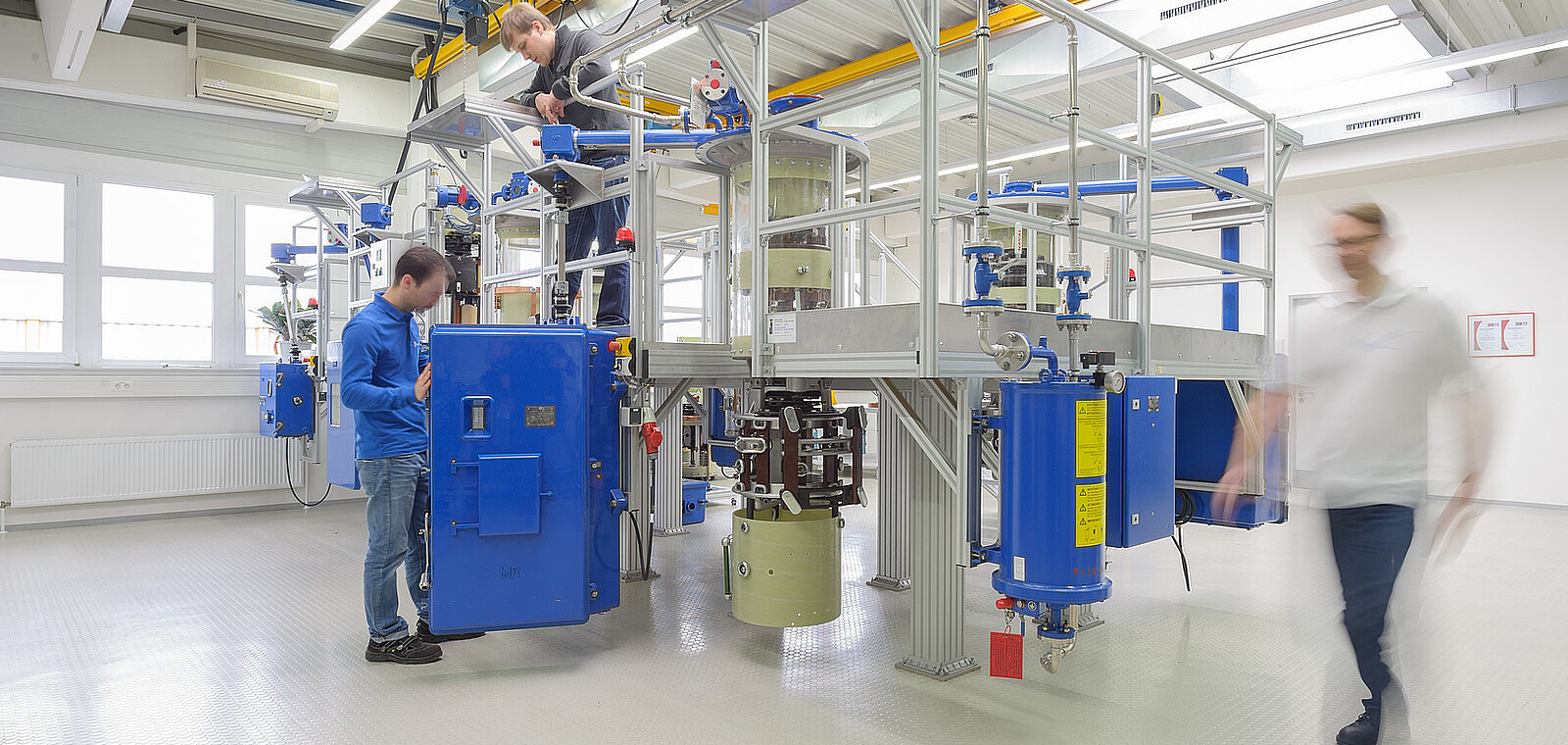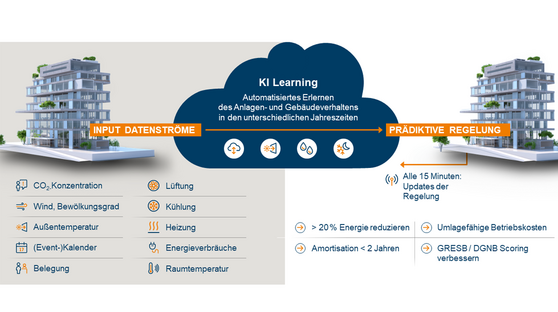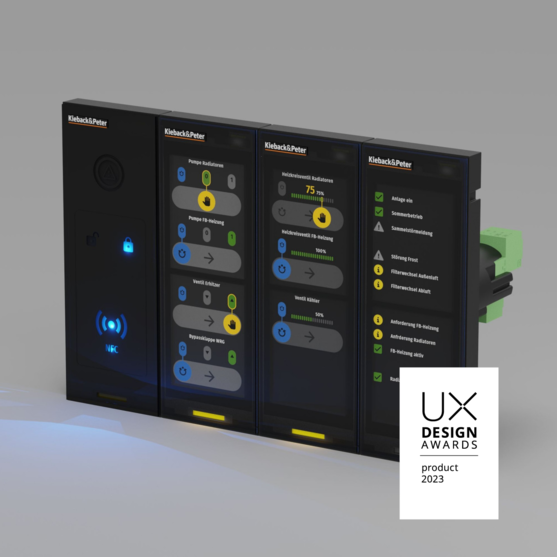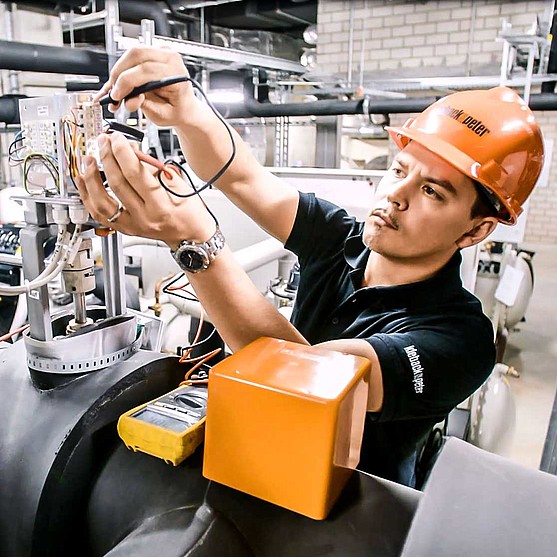en:predict – More energy efficiency in buildings with AI

“Acting with foresight” is very much a human capability. But now, en:predict from Kieback&Peter is also giving buildings the capacity to learn from past events and develop apposite strategies: en:predict enables building technology to adapt the energy used for heating, ventilation and air conditioning to the anticipated demand, and therefore prevent unnecessarily high consumption and CO₂ emissions.
Creating added value for the future using data from the past
en:predict is a self-learning algorithm for controlling the system management of building technology and is the latest component of the CO₂ Reduction Roadmap from Kieback&Peter. The smart software has already been used successfully in all relevant asset classes since 2018 under the term “Model Predictive Control (MPC)”. It “learns” on the basis of individual data sources, such as the heating and cooling behavior of the building, the footfall at different times or regularly changing opening times. Thanks to this continuous learning, it is possible to automatically control the heating, ventilation and air conditioning in such a way that the required temperature or air quality for each zone and each room is maintained precisely without “control dips.”
Like second sight, only more accurate and smarter

As input for accurate control forecasts, en:predict uses the ongoing operating data of the heating, ventilation and air conditioning systems, consumption data, measured actual weather data, as well as weather forecasts and additional parameters such as the measured footfall, room occupancy or opening times.
These data sources can easily be made accessible with a manageable amount of effort. To do so, Kieback&Peter integrates customized sensors and meters in the existing systems and selected rooms – even during ongoing operation – and connects these to the en:predict software in the cloud. Following an initial, short “training phase”, en:predict ensures that the building technology in day-to-day operations is controlled 24/7 as proactively as if by a perfect facility manager who has nothing else to do but take care of the building technology round the clock.
For example, in the event of a cold snap forecast by the weather service, the predictive control ensures that the flow temperature of the heating system is raised to the required level at exactly the right time for the specific building.
Load profile smoothing saves energy and protects systems
As en:predict continually updates its knowledge of the building, and therefore becomes ever more familiar with the building’s energy behavior, the control interventions become increasingly forward-looking. This leads to a continually high control stability, which also helps to smooth the load profile, meaning that heating and cooling generators or fans operate more frequently at their ideal operating points. This reduces energy consumption and can significantly extend the lifetime of the hardware.
en:predict pays off – over 20% energy savings with little effort
en:predict can be integrated quickly and simply into practically any building with a floor space over 5,000 m² – making it ideal for the retail, health, production, administration and education segments. The comparatively low investment costs usually pay for themselves in under two years, i.e. just a short time after commissioning – thanks to a saving of at least 20 percent in primary energy. The actual savings made can be viewed at any time on en:predict’s clear and intuitive dashboard.
Good for the carbon footprint – and for the balance sheet
As a further component of Kieback&Peter’s CO₂ Reduction Roadmap and sustainability strategy, en:predict provides building owners, investors and operators with a high level of investment protection: en:predict increases the value of the property, reduces operating costs and makes it easier to comply with legal requirements and verification obligations. So, as en:predict shows, it pays to act with foresight.







